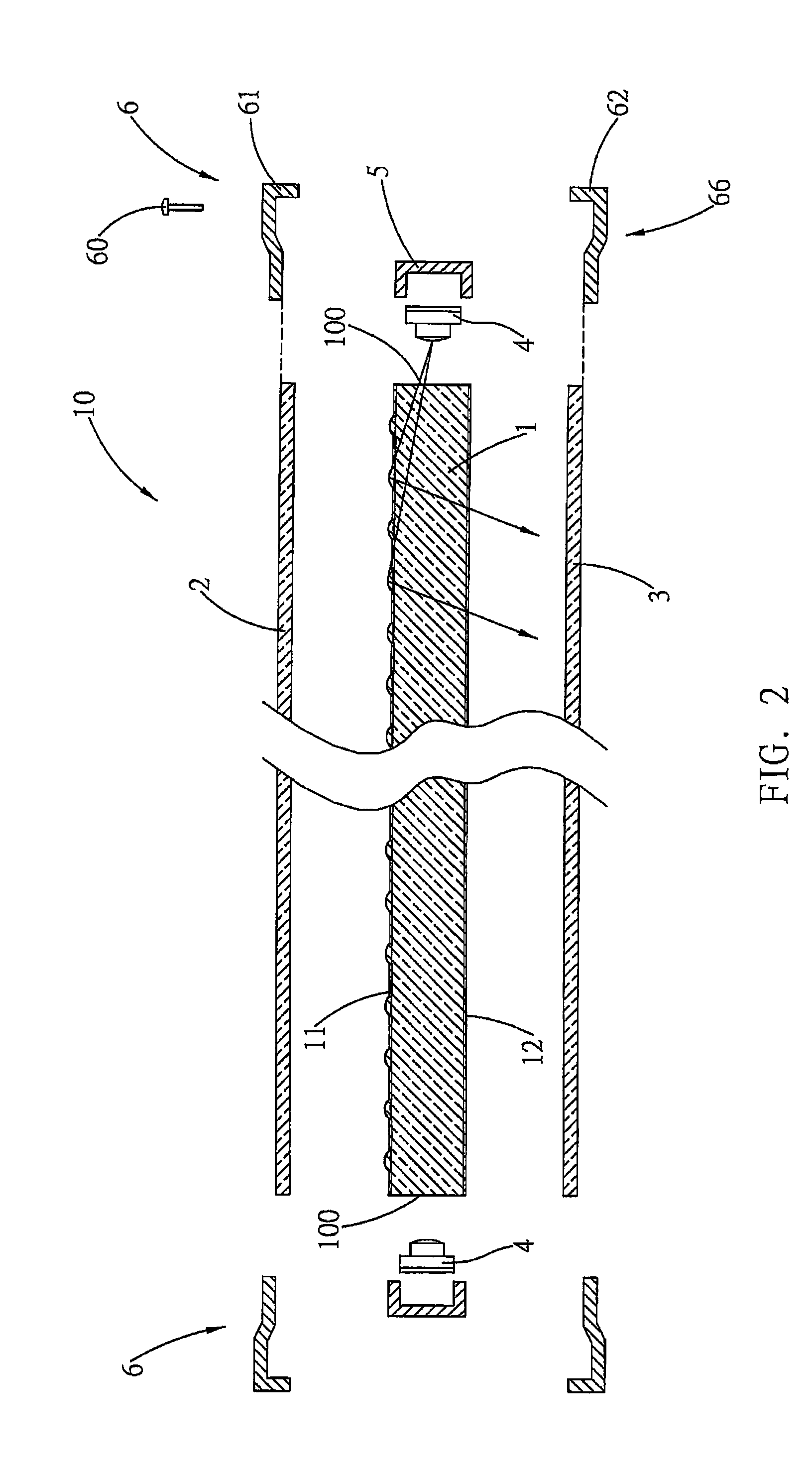Refraction-type led ceiling lamp
a technology of led ceiling lamps and diodes, which is applied in the direction of fixed installation, lighting and heating equipment, instruments, etc., can solve the problems of waste heat generated correspondingly, difficult to define the illumination angle of an ordinary lamp-set, and inferior color rendering index of led lamps, so as to achieve the effect of utilizing light flux
- Summary
- Abstract
- Description
- Claims
- Application Information
AI Technical Summary
Benefits of technology
Problems solved by technology
Method used
Image
Examples
Embodiment Construction
[0031]Referring to FIG. 1, a ceiling lamp 10 of the present invention is applied to an indoor ceiling, e.g. of a configuration with light-weight steel frames 8. The ceiling lamp 10 has a same area as a partition panel 80 and therefore can be easily assembled at the light-weight steel frame 8 to form illumination on a ground.
[0032]Referring to FIG. 2, the ceiling lamp 10 of the present invention comprises primarily a light guide plate 1, wherein two opposite sides are parallel to each other and are formed respectively with an entrance surface 100, an exterior part of the entrance surface 100 is provided correspondingly with an LED excitation unit 4 which forms a series, and an exterior part of which is a heat conduction unit 5 to expel waste heat, forming a waste heat dissipating path. Lower and upper sides of the light guide plate 1 are formed respectively with a refraction surface 12 and a reflection surface 11. A light beam generated by the excitation unit 4 enters from the entran...
PUM
 Login to View More
Login to View More Abstract
Description
Claims
Application Information
 Login to View More
Login to View More - R&D
- Intellectual Property
- Life Sciences
- Materials
- Tech Scout
- Unparalleled Data Quality
- Higher Quality Content
- 60% Fewer Hallucinations
Browse by: Latest US Patents, China's latest patents, Technical Efficacy Thesaurus, Application Domain, Technology Topic, Popular Technical Reports.
© 2025 PatSnap. All rights reserved.Legal|Privacy policy|Modern Slavery Act Transparency Statement|Sitemap|About US| Contact US: help@patsnap.com



